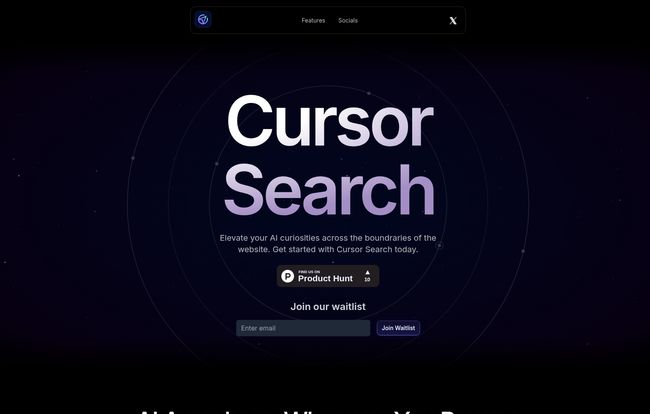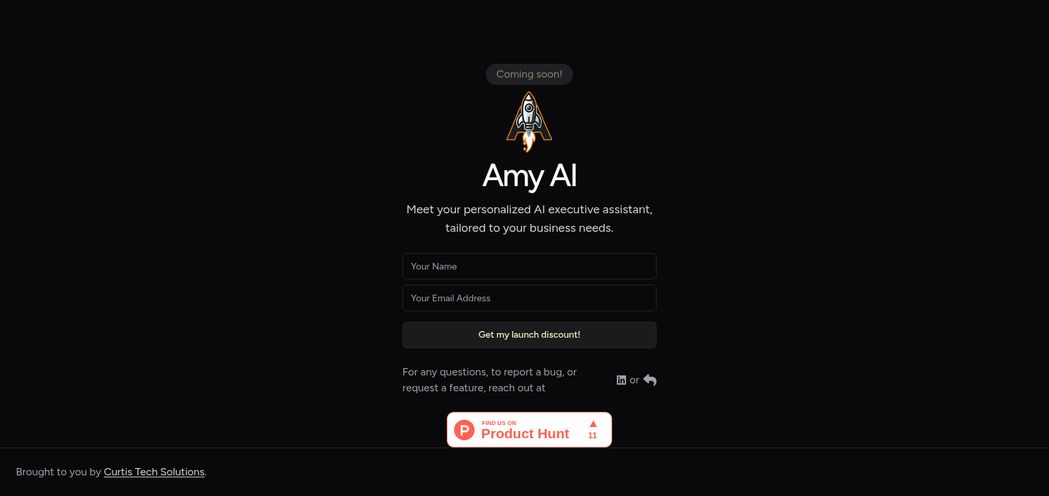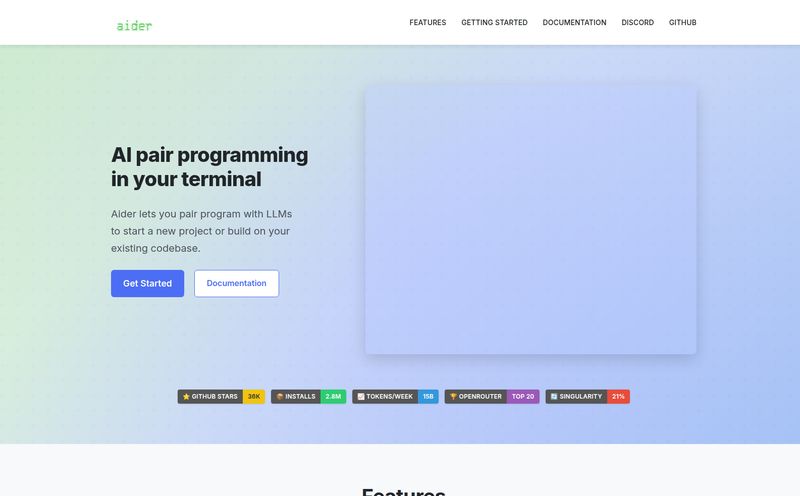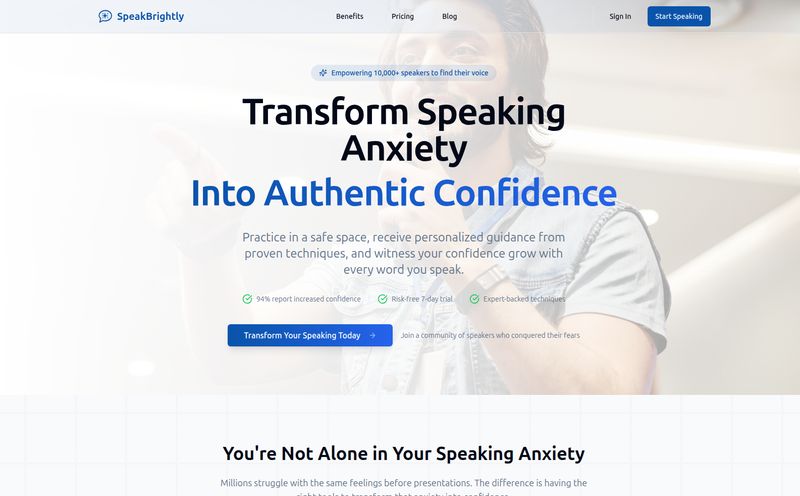How many browser tabs do you have open right now? Go on, check. I’ll wait. If you’re anything like me, a professional tinkerer in the worlds of SEO and digital traffic, your screen probably looks like a chaotic city skyline of favicons. Each tab represents a thought, a quick search, a half-finished idea, or a rabbit hole you fell into three hours ago while looking up a single statistic.
The cycle is vicious. You're deep in a document, you hit a term you don't know. You highlight it. You right-click, search. A new tab opens. You get your answer, but then you see a related article. Click. Another tab. Suddenly you’re watching a video about deep-sea creatures and you’ve completely forgotten your original task. The productivity cost of context switching is real, and it’s a silent killer of deep work.
So when I saw Cursor Search pop up—emblazoned with a sleek, space-age design and a spot on Product Hunt—my inner cynic and my hopeful optimist had a little chat. Another AI tool promising to change my life? Groundbreaking. But this one felt... different. The premise isn't about writing your emails for you or generating another soulless image. It’s about streamlining the very act of knowing. Of finding information without derailing your train of thought.
So, What Exactly Is This Cursor Search Thing?
Imagine you have a tiny, hyper-intelligent librarian who lives in your computer and rides around on your mouse pointer. That's pretty much Cursor Search. It's a Chrome extension that integrates an AI-powered search bar directly into your browsing experience. You're reading an article, you come across something you want to know more about. Instead of the whole new-tab-dance, you hit a simple keyboard shortcut (the site mentions ^ L), and a search bar appears right there, following your cursor like a loyal puppy.
You type your query, and it delivers AI-synthesized answers on the spot. It’s not just spitting out a list of blue links. It’s giving you the knowledge, the summary, the answer, right within the page you’re already on. This is about shrinking the distance between curiosity and knowledge down to almost nothing.
It’s a simple idea, but sometimes the simplest ones are the most effective. It’s built on three core promises: a cursor-following search bar, instant AI assistance, and saving you a boatload of time.
The On-Page Experience It Promises
Since the tool is currently on a waitlist, none of us can give it a full road test just yet. But we can analyze the workflow it's selling, and frankly, it's a compelling one. The whole value proposition is about being frictionless.
An End to the Tab Tsunami
I once tried to count how many times I open a new tab in a day just for a “quick search.” I stopped counting at 50 because it was getting depressing. Each one of those is a small interruption. A micro-distraction. But they add up. It's like death by a thousand papercuts for your focus.
Cursor Search wants to be the ultimate dam for that tab tsunami. By keeping you on the same page, it keeps your brain locked on the primary task. You get your info and you move on. No side quests, no accidental detours into the depths of Wikipedia. For anyone whose job depends on staying focused while doing heavy research—writers, developers, students, marketers—this is a massive selling point.

Visit Cursor Search
More Than a Search Bar, It’s an Assistant
The “Instant AI Assistance” part is what really gets my SEO-brain tingling. This suggests it’s powered by a model similar to what we see in Perplexity or the modern Bing Chat. It’s not just a shortcut to Google. It’s a shortcut to a synthesized answer. Think about the difference:
- Old Way: Wonder about “SERP volatility.” Open new tab. Google it. Click on a Moz article. Skim for the definition. Click a Search Engine Journal article for another perspective. Close tabs. Return to original task.
- Promised Way: See “SERP volatility.” Hit ^ L. Type “what is SERP volatility.” Get a concise, AI-generated explanation right there. Move on with your life.
That subtle shift from a search engine to an answer engine is where the real power lies. It's about efficiency on a whole new level.
But Let’s Be Real, What Are the Catches?
No tool is perfect, especially not one that hasn’t even launched yet. My years of testing shiny new software have taught me to look for the trade-offs. Based on the info available, here are a few things to keep in mind.
Living Inside the Chrome Bubble
The most obvious limitation is that it’s a Chrome extension. If you're a die-hard Firefox, Safari, or Arc user, you're out of luck for now. This is a common strategy for new tools—build for the biggest market first and expand later—but it’s still a barrier for a significant chunk of users. Me? I live in Chrome, so it's not a dealbreaker, but it’s something to be aware of. It won’t be revolutionizing everyone’s web browsing, just the Chrome crowd's.
The Installation ‘Hurdle’ and Connectivity
Okay, the fact that it “requires the Chrome extension to be installed” is listed as a con, which is kinda funny. It’s an extension. Of course you have to install it. That's like saying a car's con is that it needs gas to run. A more legitimate point is the need for an internet connection for the AI features to work. Again, this is standard for any cloud-based AI tool, but if you do a lot of work on patchy Wi-Fi or offline, its main powers will be diminished.
The Big Unanswered Question: What Will Cursor Search Cost?
Ah, the million-dollar question. Or, hopefully, the $5-a-month question. The website is currently in waitlist mode, with no pricing information in sight. This could mean a few things, and we can only speculate.
| Potential Pricing Model | My Take |
|---|---|
| Freemium | This seems likely. A free version with a limited number of AI queries per day or month, and a paid Pro plan for heavy users. This is a popular model for AI tools and a great way to get people hooked. |
| One-Time Purchase | Highly unlikely for a tool that relies on continuous API calls to a large language model. The server costs are ongoing, so a subscription makes more sense for the developers. |
| Subscription-Only | Also very possible. A flat monthly or annual fee for unlimited access, maybe somewhere in the $8 - $15 per month range, similar to other productivity-enhancing AI tools. |
Personally, I’m hoping for a generous freemium model. I think the value is there for a subscription, but the price point will be critical. If it’s too high, the convenience might not be enough to overcome the simple, free act of just opening a new tab.
The Verdict: Should You Join the Waitlist?
So, here's my two cents. Yes. You should absolutely join the waitlist.
Look, in the world of SEO and digital marketing, we are constantly bombarded with new tools. Most of them are just noise—a slightly different take on an old idea. Cursor Search feels different. It isn’t trying to reinvent the wheel; it’s just trying to make the wheel accessible without you having to get out of the car. It’s a targeted solution to a universal problem: the friction of finding information.
Will it be a flawless, life-altering piece of software? Probably not. There will be bugs. The AI might hallucinate an answer now and then. But the core concept is so fundamentally sound that it's worth taking a look. The potential to reclaim focus and shave off the accumulated minutes of distraction throughout the day is a value proposition I can get behind. I've signed up. The worst that can happen is I get an email I have to archive. The best that can happen is that my daily workflow gets just a little bit smarter. And in this game, every little bit counts.
Frequently Asked Questions
- What is Cursor Search?
- Cursor Search is a Chrome browser extension that provides an AI-powered search bar directly at your cursor's location. It allows you to get instant answers and information without needing to open a new tab.
- How do you activate Cursor Search?
- You use a simple keyboard shortcut. Based on their website, the default shortcut appears to be Control + L (or Command + L on Mac).
- Is Cursor Search a free tool?
- Currently, there is no public pricing information as the tool is on a waitlist. It's possible it will operate on a freemium model, with a free basic version and a paid premium plan, but this is just speculation.
- Can I use Cursor Search on Firefox or Safari?
- As of now, no. Cursor Search is designed specifically as a Chrome extension, so it only works within the Google Chrome browser.
- How is this better than just opening a new Google tab?
- The primary advantage is speed and focus. It eliminates the need for context switching—leaving your current page—which can break concentration and lead to distractions. It brings the answer to you, rather than making you go hunt for it in a new tab.
- Where can I sign up for the waitlist?
- You can join the waitlist directly on the official Cursor Search website to be notified when it becomes available.
Wrapping It Up
Tools like Cursor Search represent a subtle but important shift in how we interact with information. We're moving away from the 'search and seek' model and toward a future of 'ask and receive.' It's about integrating intelligence so deeply into our existing workflows that it becomes invisible. An extension of our own curiosity. I, for one, am excited to see if Cursor Search can deliver on that promise. Now, if you'll excuse me, I have about 37 tabs to close.
Reference and Sources
- Official Website: Cursor Search (Note: This is a placeholder URL as the actual one isn't available from the image)
- Product Hunt: Product Hunt Homepage (where the tool was featured)



